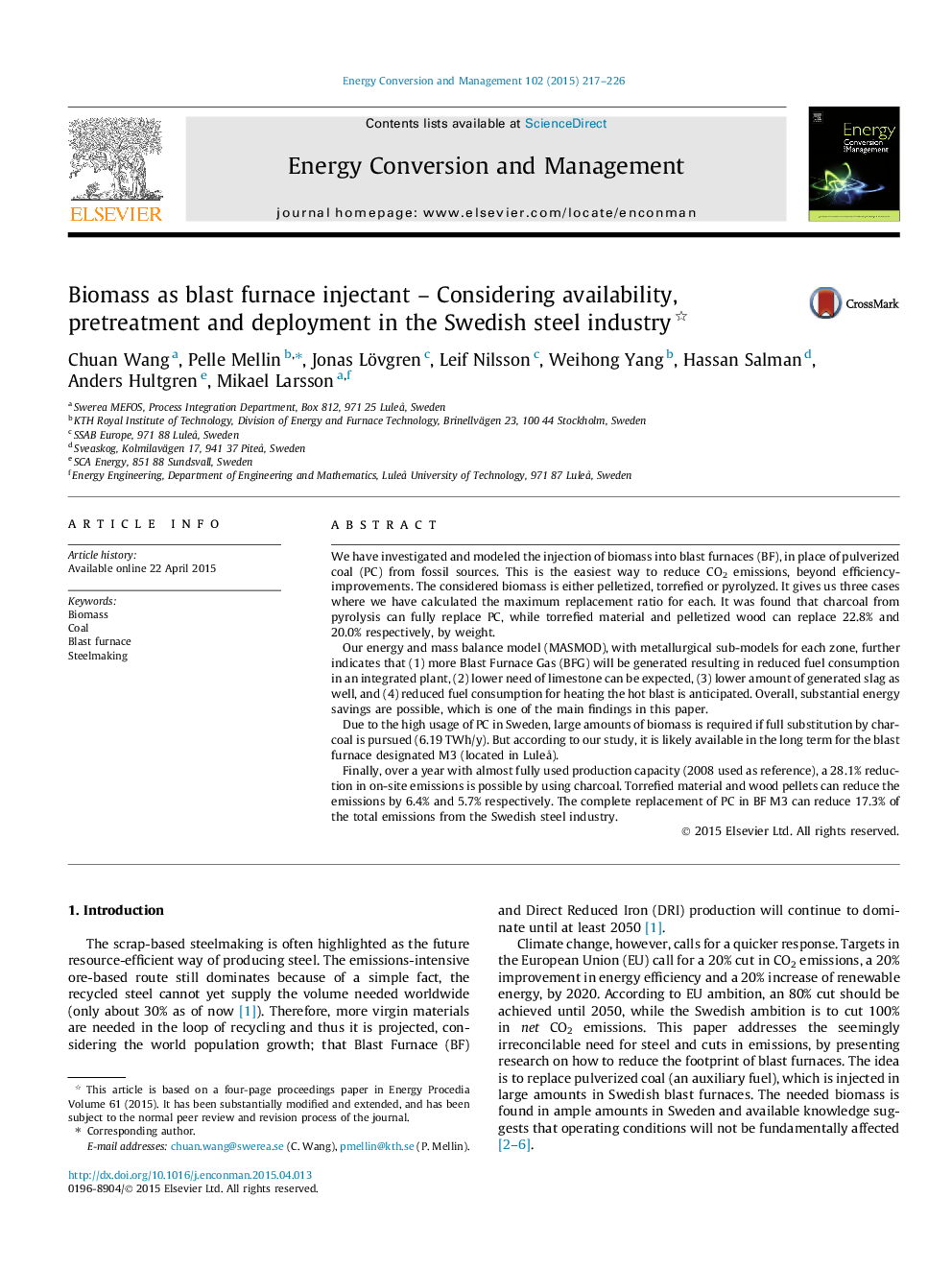| کد مقاله | کد نشریه | سال انتشار | مقاله انگلیسی | نسخه تمام متن |
|---|---|---|---|---|
| 763550 | 1462860 | 2015 | 10 صفحه PDF | دانلود رایگان |
• Injection of biofuels was modeled, using real blast furnace data as reference.
• For charcoal, torrefied and pelletized biomass; a replacement limit was predicted.
• As expected, reduced CO2 emissions are possible, especially when using charcoal.
• We also found that substantial energy savings can be made, using any of the biofuels.
• Circumstances today and biomass availability tomorrow are encouraging for deployment.
We have investigated and modeled the injection of biomass into blast furnaces (BF), in place of pulverized coal (PC) from fossil sources. This is the easiest way to reduce CO2 emissions, beyond efficiency-improvements. The considered biomass is either pelletized, torrefied or pyrolyzed. It gives us three cases where we have calculated the maximum replacement ratio for each. It was found that charcoal from pyrolysis can fully replace PC, while torrefied material and pelletized wood can replace 22.8% and 20.0% respectively, by weight.Our energy and mass balance model (MASMOD), with metallurgical sub-models for each zone, further indicates that (1) more Blast Furnace Gas (BFG) will be generated resulting in reduced fuel consumption in an integrated plant, (2) lower need of limestone can be expected, (3) lower amount of generated slag as well, and (4) reduced fuel consumption for heating the hot blast is anticipated. Overall, substantial energy savings are possible, which is one of the main findings in this paper.Due to the high usage of PC in Sweden, large amounts of biomass is required if full substitution by charcoal is pursued (6.19 TWh/y). But according to our study, it is likely available in the long term for the blast furnace designated M3 (located in Luleå).Finally, over a year with almost fully used production capacity (2008 used as reference), a 28.1% reduction in on-site emissions is possible by using charcoal. Torrefied material and wood pellets can reduce the emissions by 6.4% and 5.7% respectively. The complete replacement of PC in BF M3 can reduce 17.3% of the total emissions from the Swedish steel industry.
Journal: Energy Conversion and Management - Volume 102, 15 September 2015, Pages 217–226
